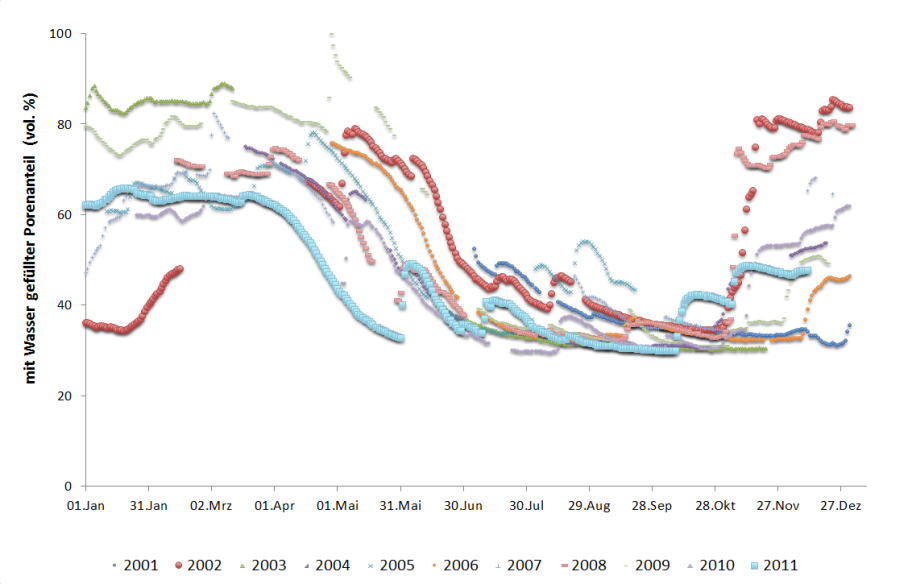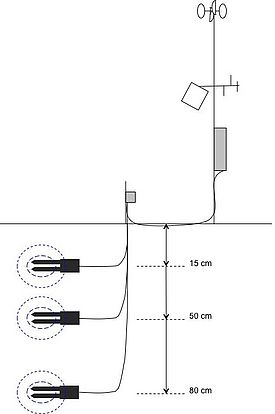Soil water content is an important driver for many ecosystem processes. It influences the exchange of water, of nutrients and of energy between the soil, the vegetation and the atmosphere.
Soil water content is expressed as the volume of water per total volume of soil (e.g., in m3 water per m3 soil). At full saturation, the entire pore volume (void) of the soil is filled with water. In small pores, capillary forces induce a suction tension when empty pores tend to suck up water. The smaller the pores, the higher the suction. Hence, when soil dries out, larger pores are emptied first and smaller pores later. This way, suction tension increases steadily and plants require more and more counteracting tension to continue to take up water. However, the maximum suction tension that plants can generate is limited (typically approximately -15 000 hPa). Consequently, the total pore volume, the proportion of the pore volume for plant available water, and the shape of the relation between soil water content and soil tension (pF curve) is a characteristic of the soil that depends mainly on soil texture.
The variable "water saturation S (%)", is an alternative to the variable "soil water content" and is defined as the proportion of the pore space that is filled with water.
Most valuable information about the availability of water for plants is gained if both the soil water content and suction tension are measured simultaneously. Establishing the pF-curve by this procedure will tell us whether the water is mobile and will leach to the groundwater nitrate and nutrients to the groundwater, whether it is available for plant, and how much water the soil can retain during drought periods. Such measurements are also an important basis for the improvement of water and nutrient cycle modelling.
EC-5 sensors determine the volumetric water content using a time domain reflectometry or a capacitance measurement approach based on measurements of the dielectricity properties the soil. This approach is based on the fact that the dielectricity of a soil depends on its air, water, ice, mineral and humus content. The sensors must therefore be calibrated for the soil in question, either: (a) in the laboratory, with fine soil from the corresponding soil layers, (b) with a function from the bulk density, or (c) empirically with the measured data.
On the LWF sites the automatic measurements take place hourly or every 10 minutes in three or four depths (15, 50 and 80 cm, in some cases also 150 cm). The measured volumetric soil water content varies greatly, both within a year and between years and will help us to disentangle natural from climate-change driven variability (Fig. 3).
Livedaten ¶



